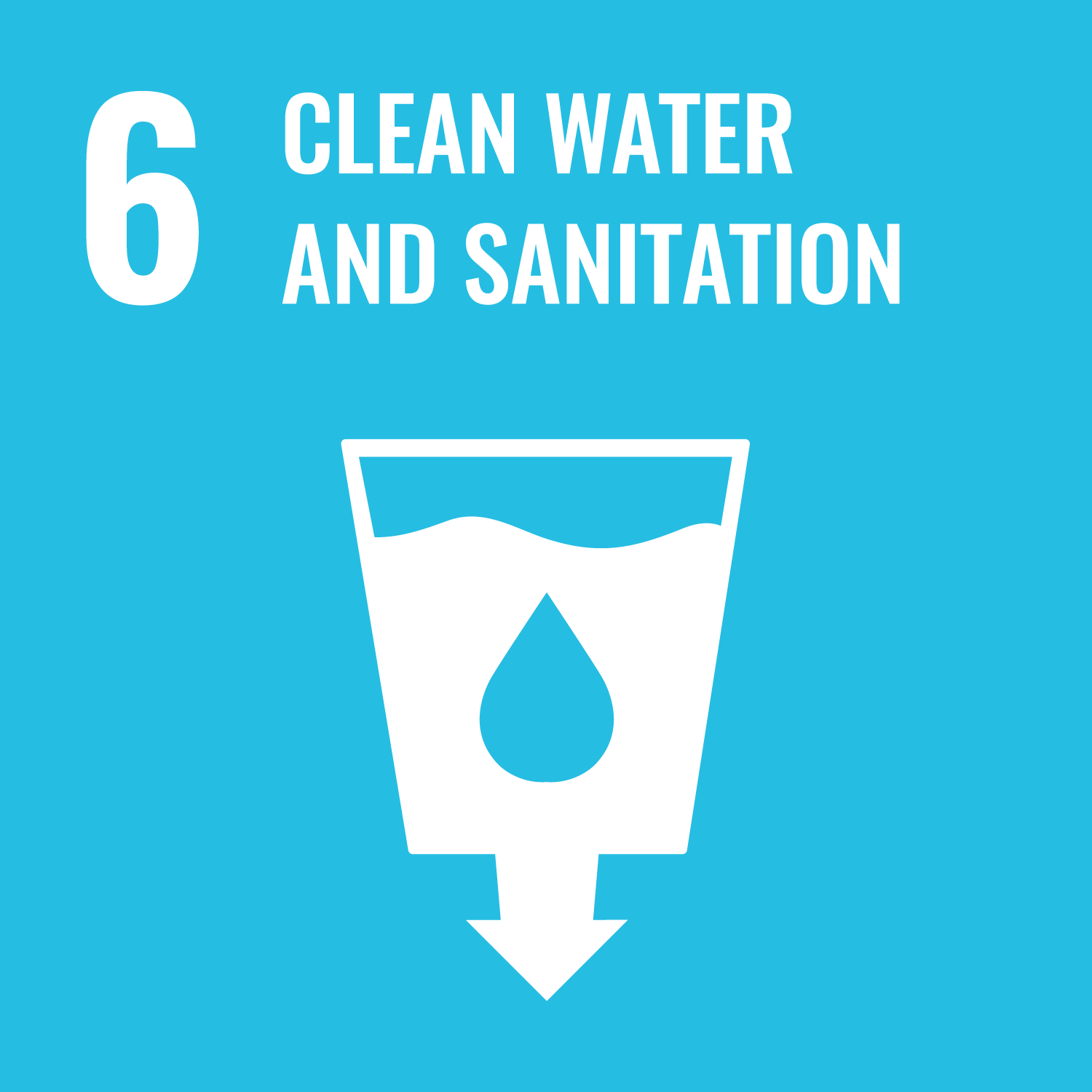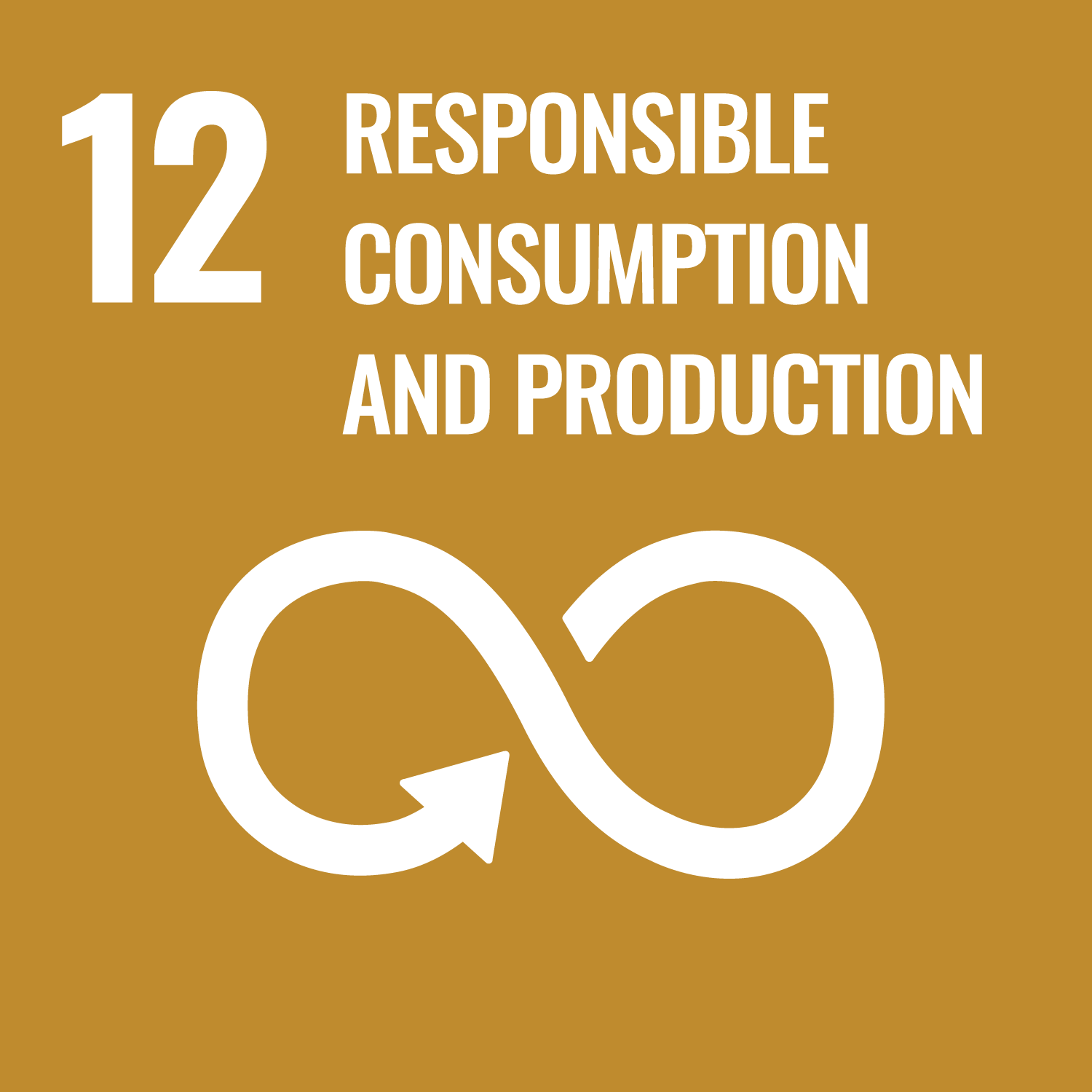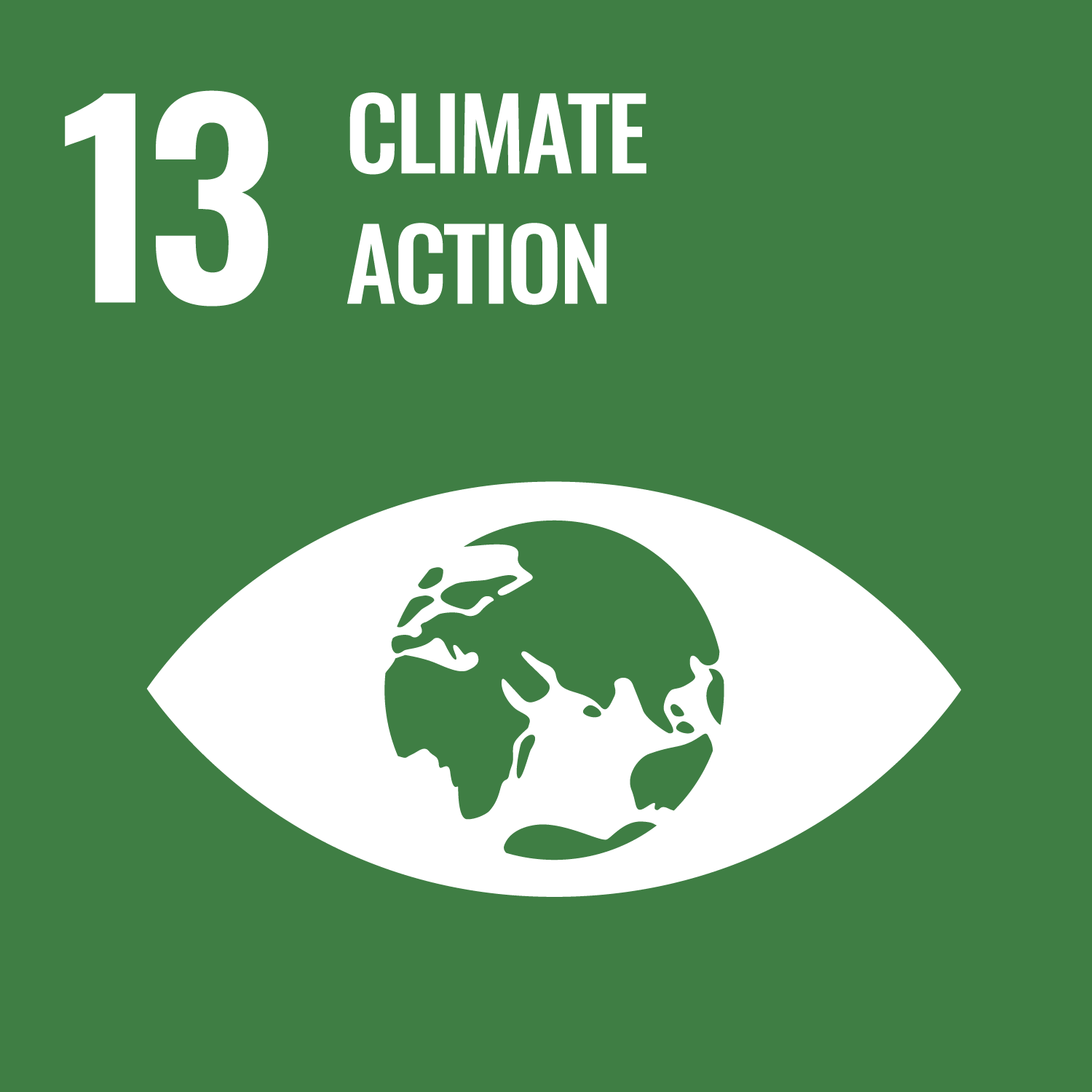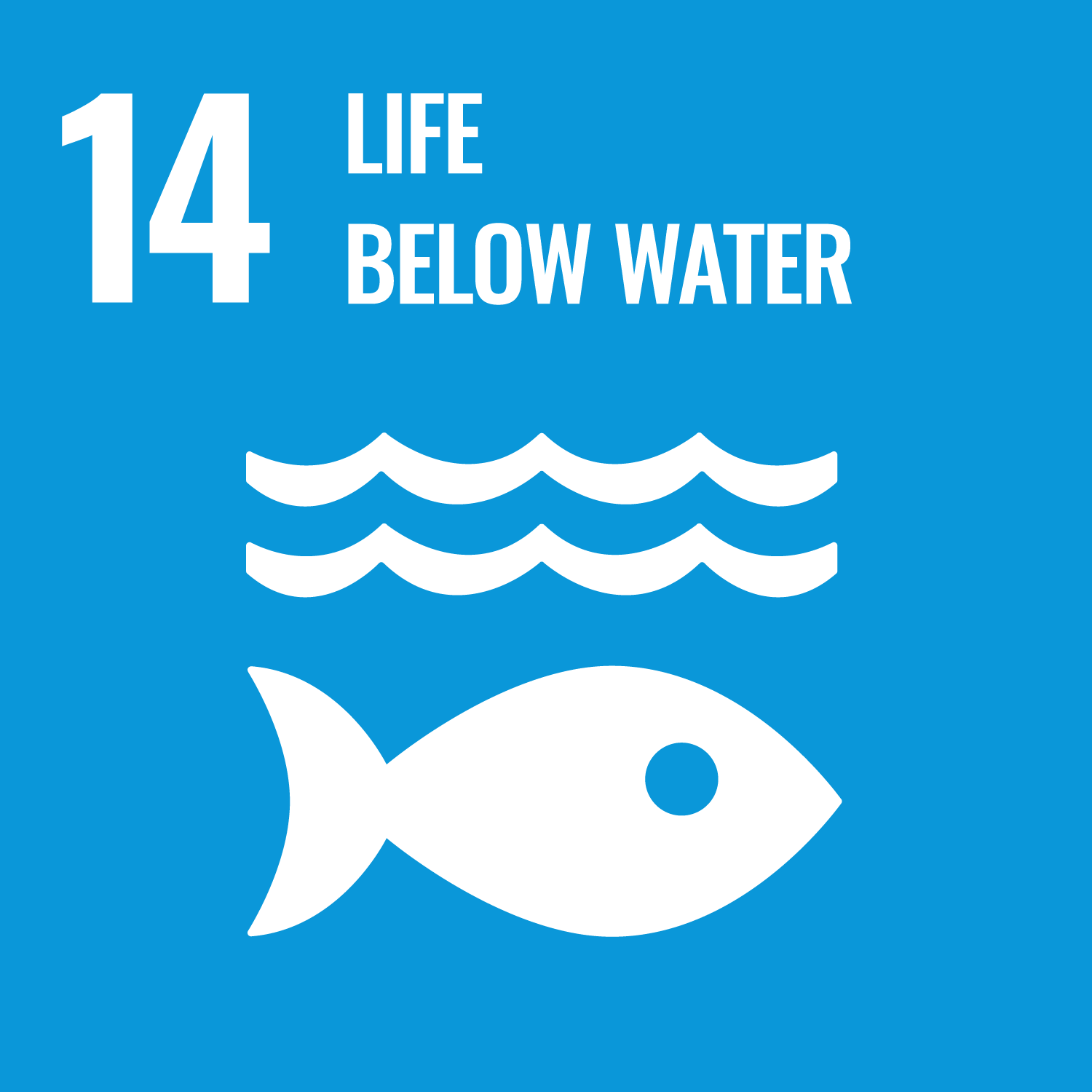UN SDGs

Overview
Our project aims to develop a symbiotic relationship between Escherichia coli and Synechococcus elongatus, where the E. coli would be engineered to synthesize PETase and MHETase enzymes, which can degrade PET plastics. The photosynthetic bacterium S. elongatus will be used as a bioreactor, producing sucrose that will fuel E. coli’s activity. Seeing our project scope, it undeniably touches on a few key sustainability aspects, and we believe that it can contribute to the United Nations (UN) Sustainable Development Goals (SDG), which are key to ensuring that life on Earth and the planet itself are well protected and has the ability to prosper; by 2030.Goal #6: Clean Water and Sanitation
Ensure availability and sustainable management of water and sanitation for all
According to The UN Sustainable Development Goals Report 2021 [1], 2 billion people still lacked access to safely managed drinking water in 2020. It is also worth noting that with the ever increasing water pollution levels, including the high volume of plastic and microplastic waste, the UN has also urged society when targeting this goal to keep water bodies protected from further pollution, since restoration would be far more difficult once they are substantially contaminated [1].
Our project primarily aims at cutting down on drinking water pollution, allowing us to partly achieve target 6.3 of UN SDG Goal #6; improving water quality by reducing pollution [2]. More often, plastics that are disposed of in the environment, such as on land or in seas, undergo weathering and turn into microplastics or toxic compounds that may leech into our rivers, lakes and groundwater from which we collect potable water. It is also worth mentioning that a large proportion of the plastic pollution comes from PET, and so when they are degraded into monomers by the enzymes in our system, we can hence reduce water pollution.
If our system could be implemented internationally while offering assistance and capacity-building support to developing countries, it would not only allow them to get rid of plastic-related pollutants and improve their water quality and solve the ongoing problem of inadequate clean water, but also decrease the numerous health-related issues associated with unsafe drinking water.
Goal #12: Responsible Consumption and Production
Ensure sustainable consumption and production patterns
With this goal, the UN addresses the issues surrounding the usage of natural resources, food waste, waste generation and management, the lack of sustainable development and practices, and the related information inadequacy [3].
Currently, the situation is far off the proposed target; plastic overproduction, overconsumption, wastage and the lack of recycling practices can still be extensively observed today. For example, the UN 2021 Report highlighted that 1 million plastic drinking bottles, which are made of PET, were purchased every minute between 2000 and 2017 [1]. Eco.ly would be able to address this issue, since we focus on breaking down PET plastic into the monomers TPA and EG -- which are end-products that have the potential to be further processed to create bioplastics or serve as raw materials to create new products in other industries. In this regard, we reduce the need for the synthesis of new plastics, thus preventing the release of a significant amount of plastic waste to both water and soil.
Additionally, we hope to advocate for a reduction of plastic production directly at its largest producers: large multinational companies that still maintain a plastic-riddled supply chain, by providing them with the raw materials created from PET plastic recycling, from which they can develop and produce new materials that are more sustainable. In fact, this measure resonates with target 12.6 of UN SDG #12, which is to encourage companies, especially large and transnational companies, to adopt sustainable practices and to integrate sustainability information into their reporting cycle [3].
Goal #13: Climate Action
Take urgent action to combat climate change and its impacts
Strengthening cities’ resilience to both climate-related and natural disasters, integrating climate change policies, improving education on climate change issues and its mitigation are just a few of the many focuses targeted by this UN SDG [4].
The amount of carbon dioxide and other greenhouse gases in the atmosphere are rising continuously, causing numerous problems including climate change. As a matter of fact, the 2020 global average temperature lies at 1.2 degrees above the pre-industrial baseline [4]. Based on the Paris Agreement, this means that global greenhouse gas emissions need to fall drastically in order to reach the target of limiting global temperature rise to 1.5 degrees celsius only. To address such a need, our system may have the potential to alleviate global warming by reducing carbon dioxide levels in the future. A paper by Supuran & Capasso highlights the opportunity to design agents for carbon capture [5]. Similarly, our plasmid design in the distant future could be modified to possibly include the ability for E. coli to convert atmospheric carbon dioxide into bicarbonate, by using a carbonic anhydrase reaction, which can then be given to S. elongatus as an extra carbon source to improve photosynthetic efficiency.
Goal #14: Life Below Water
Conserve and sustainably use the oceans, seas and marine resources for sustainable development
Life below water means prioritising the reduction of marine pollution, especially those from land-based activities, protection of marine ecosystems, the ocean acidification problem, conservation of marine areas and more [6].
It is well known that plastic is one of the main culprits that put the sustainability of oceans under threat from severe marine pollution. Similarly to the idea behind our alignment with UN SDG Goal #12, we plan to address this issue by stopping plastics, microplastics and toxic compounds from further flowing into our world’s waters. Ultimately, we hope that Eco.ly could be used to minimise and address the problem of marine plastic pollution by decreasing the amount of plastic debris floating in our oceans, protecting marine ecosystems and stopping the issue from being exacerbated.
References
[1] United Nations (2021). The Sustainable Development Goals Report 2021. Retrieved from https://unstats.un.org/sdgs/report/2021/[2] United Nations (2021). Goal 6 - Ensure availability and sustainable management of water and sanitation for all. Retrieved from https://sdgs.un.org/goals/goal6
[3] United Nations (2021). Goal 12 - Ensure sustainable consumption and production patterns. Retrieved from https://sdgs.un.org/goals/goal12
[4] United Nations (2021). Goal 13 - Take urgent action to combat climate change and its impacts. Retrieved from https://sdgs.un.org/goals/goal13
[5] Supuran, C., & Capasso, C. (2017). An Overview of the Bacterial Carbonic Anhydrases. Metabolites, 7(4), 56. Retrieved from https://doi.org/10.3390/metabo7040056
[6] United Nations (2021). Goal 14 - Conserve and sustainably use the oceans, seas and marine resources for sustainable development. Retrieved from https://sdgs.un.org/goals/goal14
